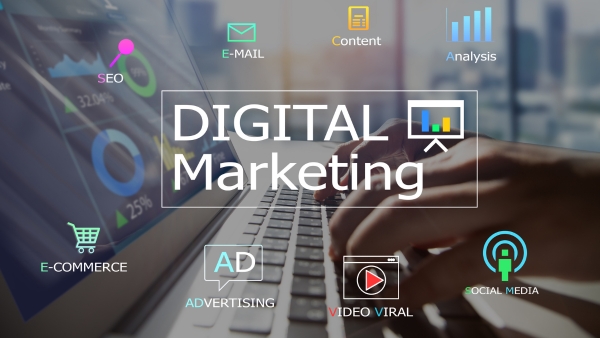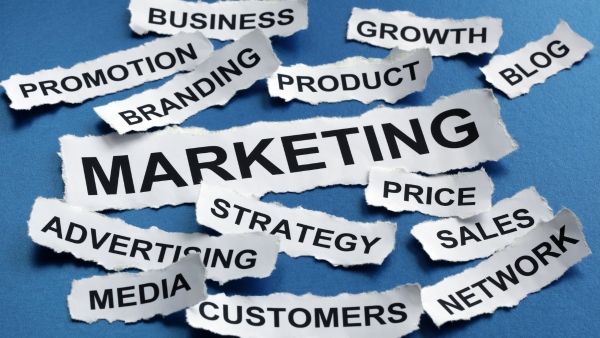Welcome to the world of Marketing 5.0, an exciting journey to unlock the most innovative and impactful strategies that are revolutionizing the way brands connect with their customers.
You may have heard about Marketing 1.0 and 2.0, which focused on products and consumers, and Marketing 3.0, which valued the emotional aspects. Now, get ready to discover the next level of this evolution: Marketing 5.0!
In this article, we will dive deep into the concept of Marketing 5.0, its goals and how it goes beyond previous approaches, connecting holistically with people and their needs.
Inspiring examples of brands that have taken this approach will also be explored, along with insights on how to apply Marketing 5.0 to your own marketing efforts. Come with us and embark on this journey towards the future of marketing!
How to understand the evolution of marketing?
To understand the evolution of marketing, it is essential to explore the different eras through which the discipline has passed.
We started with Marketing 1.0, focused on the industrial era, where attention was focused on the product and its characteristics. Then came the Marketing 2.0, centered on the consumer and their needs.
Later, we arrived at Marketing 3.0, which embraced the emotional dimension, seeking to connect with customers’ values and aspirations. Then Marketing 4.0 emerged with digital transformation, emphasizing online presence and customer experience.
Now, in Marketing 5.0, we witness an even deeper evolution, combining advanced technology with genuine empathy to meet humanity’s demands.
This approach places people at the center of strategies, promoting meaningful connections and aligned with the public’s values.
Marketing 5.0, in short, represents a powerful integration between technology and humanity, generating an authentic and positive impact on people’s lives.
What is Marketing 5.0?
Marketing 5.0 is a modern, humanized approach to marketing that focuses on deeply understanding people’s values, needs and aspirations.
In this era, technology is used as a tool to create authentic emotional connections with the public, seeking to go beyond the simple commercial transaction.
Marketing 5.0 recognizes that consumers are increasingly demanding and informed, seeking brands that share the same values and are committed to social and environmental issues.
Thus, marketing strategies focus on offering meaningful and relevant experiences that meet customer expectations and contribute to the well-being of society as a whole.
This approach involves personalizing audience interactions, creating relevant and inspiring content, and aligning brand values with consumer values. Marketing 5.0 seeks to create a lasting emotional connection with customers, turning them into loyal brand advocates.
Why is it necessary to adapt to Marketing 5.0?
It is necessary to adapt to Marketing 5.0 because we are living in an era of rapid changes and unprecedented technological advances.
Consumers have access to an immense amount of information and are more aware of the impact that their consumption choices have on the world around them.
Given this scenario, traditional marketing strategies, which were mainly based on persuasion and product sales, are no longer enough to win and keep loyal customers.
Marketing 5.0 focuses on people, their emotions and desires, seeking to deeply understand what really matters to them.
Adapting to this approach is essential to build trust and loyalty with consumers, demonstrating that the brand cares about their needs and values.
Marketing 5.0 Objectives
The objectives of Marketing 5.0 are to emotionally connect with the target audience, creating meaningful bonds that go beyond the mere commercial transaction.
This approach seeks to deeply understand the needs, desires and values of consumers in order to establish a genuine and lasting connection with them.
Another objective is to create memorable experiences for customers, providing unique and personalized interactions that generate a positive impact on their lives. By offering exceptional experiences, brands are able to differentiate themselves in the market and captivate consumers.
In addition, Marketing 5.0 aims to build a strong and authentic brand, with a clear purpose and values aligned with those of customers. An authentic brand earns consumers’ trust and loyalty, becoming a natural choice in their purchasing decisions. In the next block, we will see each of these objectives in detail; let’s go?
1. Connect emotionally with the target audience
In the context of Marketing 5.0, connecting emotionally with the target audience is essential to create a meaningful and lasting relationship with customers.
This approach focuses on people, their emotions and aspirations, seeking to deeply understand their needs and desires in order to offer truly relevant solutions.
By emotionally connecting with consumers, brands manage to go beyond a simple commercial relationship, creating emotional ties and loyalty.
This implies transmitting values and purpose, establishing engaging narratives and using elements that resonate with the audience’s emotions.
Through inspiring campaigns, authentic storytelling and personalized experiences, marketing 5.0 seeks to touch the hearts of consumers, generating a positive impact on their lives and building a connection that goes beyond the characteristics of the product or service offered.
2. Create memorable experiences for customers
Within the scope of Marketing 5.0, creating memorable experiences for customers is one of the main goals of modern brands. This means going beyond the simple commercial transaction and providing unique and meaningful experiences that resonate with the public.
Memorable experiences are built through carefully planned interactions across all customer touchpoints, from brand discovery to post-sales. The objective is to delight, surprise and satisfy the emotional and practical needs of the consumer.
Through innovative approaches, personalization, technology and creative design, marketing 5.0 seeks to provide moments that remain in the customer’s memory, generating a positive impact and strengthening the relationship with the brand.
These experiences can turn into powerful word-of-mouth and loyalty marketing tools, driving business growth and success.
3. Build a strong and authentic brand
A strong brand has a clear and consistent identity, conveying its values and purpose in a genuine way.
Authenticity is valued by modern consumers, who seek to identify with the brands they consume. Marketing 5.0 encourages companies to position themselves honestly and transparently, establishing an emotional connection with the target audience.
A strong, authentic brand inspires trust and loyalty and creates a solid foundation for long-term growth.
By investing in engaging storytelling, genuine purpose and consistent experiences, companies can strengthen their market presence and create lasting bonds with customers, driving business success.
Examples of Marketing 5.0
Marketing 5.0 examples demonstrate how brands are using technology to connect emotionally with audiences and create memorable experiences.
Nike, with its Dream Crazy campaign, has inspired millions by highlighting athletes’ breakthrough stories and encouraging the public to pursue their dreams.
Coca-Cola innovated with the Share a Coke campaign, personalizing packaging with names and nicknames, encouraging sharing and connection between people.
Dove, with its Real Beauty campaign, broke beauty stereotypes by promoting self-acceptance and valuing diversity.
These approaches are described in Philip Kotler’s book Marketing 5.0: Technology for Humanity, which explores how companies can adapt to changing marketing ages. In the next block, we will see these examples in detail!

1. Nike: Dream Crazy Campaign
Nike’s Dream Crazy campaign is a striking example of marketing 5.0, as it transcends mere product promotion and seeks to connect emotionally with the public.
Launched in 2018, the campaign starring Colin Kaepernick, a former American football player, brought up relevant social issues, such as the fight against racial injustice and the pursuit of equality.
By featuring Kaepernick as a spokesperson, Nike has taken a bold and authentic stand, embracing a controversial cause and winning support and criticism in equal measure.
The commercial Believe in something, even if it means sacrificing everything (Believe in something, even if it means sacrificing everything) touched hearts and sparked conversations across society.
This exemplary campaign illustrates how marketing 5.0 seeks to go beyond the product, embracing meaningful values and causes, connecting emotionally with the public and positively impacting society.
2. Coca-Cola: Share a Coke
Coca-Cola’s Share a Coke campaign is an excellent example of marketing 5.0, as it demonstrates the quest to create memorable experiences for customers.
Launched in 2011, the campaign replaced the traditional Coca-Cola logo on packaging with popular names and terms like friend and love, inviting people to share a Coke with someone special.
This personalized strategy generated a strong emotional impact, encouraging people to look for their own names and those of their friends on the brand’s bottles and cans.
In addition, the campaign also encouraged interaction on social media, where people shared photos with their personalized Coke.
Share a Coke demonstrated the ability of Marketing 5.0 to create emotional connections with consumers, transforming the simple act of drinking a Coke into a personal and meaningful experience for each individual.
3. Dove: Real Beauty Campaign
Dove’s Real Beauty campaign is an emblematic example of marketing 5.0, as it focuses on emotionally connecting with the target audience and building a strong and authentic brand.
Launched in 2004, the campaign challenged traditional standards of beauty, promoting acceptance of diversity and celebrating the real beauty of women of all shapes, sizes and ages.
Rather than using professional models, Dove featured ordinary women in its campaigns, encouraging them to feel confident and beautiful in their own skins. This authentic approach resonated with audiences, generating a strong emotional impact and leading to a genuine connection with the brand.
Dove’s Real Beauty campaign has become a reference in marketing 5.0, demonstrating how a positive and inclusive message can strengthen the relationship between the brand and its consumers, making it more than just a company, but an ally in each person’s journey. individual in search of self-acceptance and confidence.
How to apply Marketing 5.0 in your strategy
To apply Marketing 5.0 to your strategy, understanding modern consumer behavior is essential. This involves knowing their needs, desires and values, seeking a genuine emotional connection with the target audience.
In addition, the use of advanced technologies is essential for personalizing messages and experiences, making interactions more relevant and meaningful for each individual.
Integrating offline and online marketing is also crucial in the context of marketing 5.0, allowing the brand to be present at different touchpoints, providing a fluid and consistent journey for the consumer.
In the next block, we’ll take a closer look at each of these applications!
1. Understanding modern consumer behavior
In the context of marketing 5.0, understanding modern consumer behavior is an essential step for the success of business strategies.
Marketing 5.0 places the customer at the center of all actions, seeking to understand their needs, motivations and values in order to establish a genuine emotional connection.
That means going beyond demographics and diving into individual preferences, exploring what drives purchase decisions and desired experiences.
Data analysis and the use of advanced technologies such as artificial intelligence and predictive analytics are key to gaining relevant insights and offering personalized products and services.
By deeply understanding the consumer, companies can create more effective marketing campaigns, develop products that meet their real needs and build lasting relationships based on trust and respect.
This drives customer engagement and loyalty, making it a competitive differentiator in today’s market.
2. Using advanced technologies for customization
Collecting and analyzing data in real time allows you to understand individual preferences, purchasing behaviors and specific interests of each consumer, enabling the delivery of highly personalized experiences.
Artificial intelligence, machine learning and big data are some of the technologies that enable large-scale personalization.
Based on the information obtained, it is possible to offer relevant product recommendations, create exclusive offers and even adapt marketing communication 5.0 to meet the specific needs of each customer.
This approach not only increases customer satisfaction, but also strengthens brand identity and builds long-term loyalty.
By realizing that their preferences are understood and valued, consumers become more engaged and likely to become brand advocates, sharing their positive experiences with others.
In this way, personalization becomes a key part of marketing 5.0, driving business success in the digital age.
3. Integrating offline and online marketing
The integration of offline and online marketing is a key strategy in the context of marketing 5.0.
Today, consumers interact with brands across multiple channels, both digitally and physically, and expect a consistent, fluid experience in every interaction.
By integrating these two worlds, companies can create more cohesive and engaging customer journeys. For example, a consumer might discover a product through an online ad, visit the physical store to see the item in person, and finally make the purchase online on their mobile device.
Through integration, the business can track that journey and ensure the customer has a seamless experience across all touchpoints.
The integration also allows companies to get the best out of each channel.
Offline marketing can strengthen the brand, create emotional connections and offer sensory experiences, while online marketing can offer precise targeting, personalization and detailed metrics.
5 Marketing 5.0 Opportunities
Marketing 5.0 opportunities offer companies the chance to build deeper emotional connections with their audiences through personalized and relevant experiences.
In addition, they allow access to valuable customer insights, providing a better understanding of their needs and desires.
With the expansion of communication channels, there is also a greater opportunity to reach global audiences. Finally, Marketing 5.0 encourages engagement and interaction on social networks, creating more dynamic and two-way communication between brands and consumers.
These opportunities reflect the evolution of marketing throughout marketing history, as highlighted in Marketing 5.0.
1. Emotional connection with the audience
The emotional connection with the public is one of the main opportunities of Marketing 5.0, as highlighted in the book Marketing 5.0.
This approach is based on understanding modern consumer behavior and creating strategies that tap into their deepest emotions and values.
By connecting emotionally, brands can establish stronger, longer-lasting relationships with their customers, fostering brand loyalty and advocacy for products and services.
This opportunity is an evolution of the history of marketing, which has gone through different eras, from a more transactional approach to the current emphasis on humanizing brands and experiences.
By creating campaigns and actions that resonate with the emotions and aspirations of the public, companies can stand out in a highly competitive scenario and gain consumer preference.
2. Personalization and relevance
With the advancement of technology and access to data, brands can better understand their customers and offer more personalized experiences, catering to the individual needs of each consumer.
By creating campaigns and relevant content, companies can stand out amidst the excess of information currently available.
Personalization allows brands to approach their audience in a unique way, becoming closer and more engaging.
Furthermore, by offering relevant content, companies increase the likelihood that their messages will be noticed and well received by consumers.
3. Access to customer insights
In the context of Marketing 5.0, access to customer insights has become more comprehensive and detailed.
With the advancement of data collection and analysis technologies, companies now have access to valuable information about consumer behavior, preferences and needs.
These insights allow brands to better understand their target audience, identify emerging trends and make more informed decisions for their marketing strategies.
Through data analytics and artificial intelligence tools, companies can segment audiences more precisely and personalize their approaches, ensuring that messages and offers are highly relevant to each customer.
Access to customer insights is one of the main advantages of marketing 5.0, allowing companies to build more meaningful and lasting relationships with their audiences.
4. Greater global reach
With marketing 5.0 and the advent of the internet and social media, brands now have the opportunity to reach a global audience in a more efficient and targeted way.
Through digital platforms, it is possible to create campaigns that reach people around the world, regardless of their geographic location.
Social networks, for example, allow brands to reach potential customers in different countries, interacting with them in real time and creating connections on a global scale.
Additionally, the availability of machine translations and localized content has made it easier for companies to communicate their message in ways that are relevant to different cultures and regions.
With greater global reach, brands can expand their presence and strengthen their reputation internationally, driving brand growth and recognition on a global scale.
5. Engagement and interaction on social networks
In marketing 5.0, engagement and interaction on social networks are crucial aspects for the success of marketing strategies. Social media has become a powerful platform for brands to directly connect with their target audience in an authentic and meaningful way.
Through social media, brands can share relevant content, answer questions, receive customer feedback and build lasting relationships.
Real-time engagement allows brands to engage in conversations with consumers, building a loyal and active community around the brand.
Furthermore, social media offers a unique opportunity for brands to get to know their customers better and gain valuable insights into their preferences, needs and behaviors.
This allows companies to adapt their marketing strategies according to public demands, increasing the effectiveness of campaigns and strengthening the brand in the market.

Conclusion
In the ever-evolving world of marketing, Marketing 5.0 emerges as a powerful approach to win over and delight modern consumers.
With a focus on emotional connection, personalization, relevance and the use of advanced technologies, this strategy promises to transform the way brands relate to their target audience.
Through Marketing 5.0, companies can create memorable experiences, build strong and authentic brands, and achieve greater engagement and global reach on social media.
It’s an exciting journey towards more human and connected marketing.
Share this knowledge with your colleagues and friends so that together we can explore and apply the full potential of Marketing 5.0, creating stronger bonds between brands and consumers in an increasingly technological and human world.



